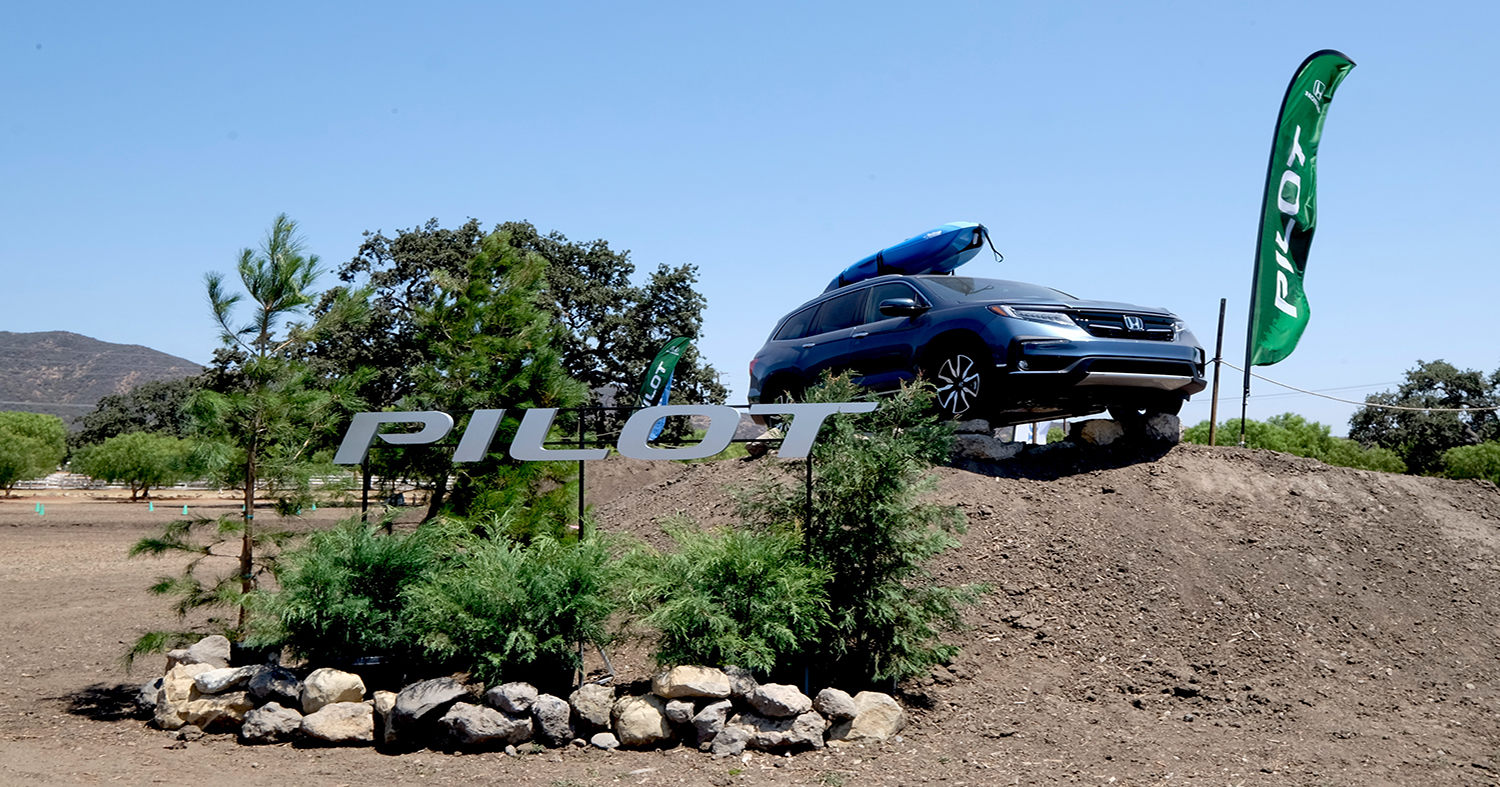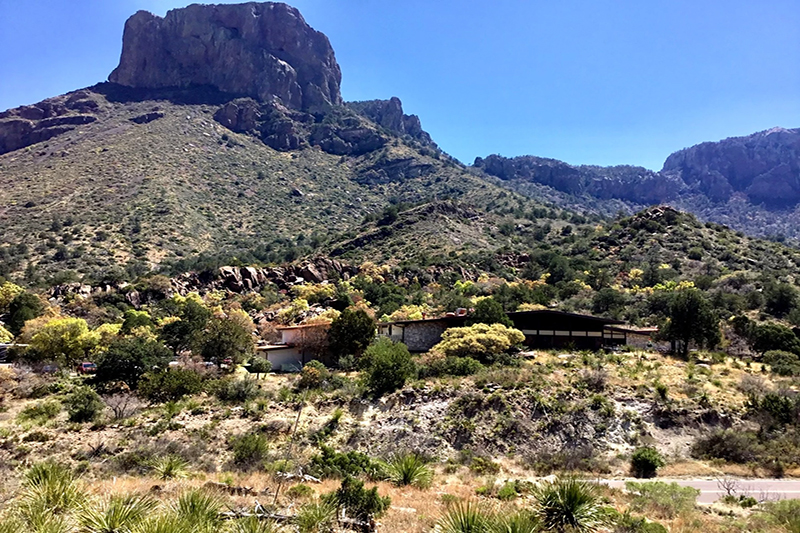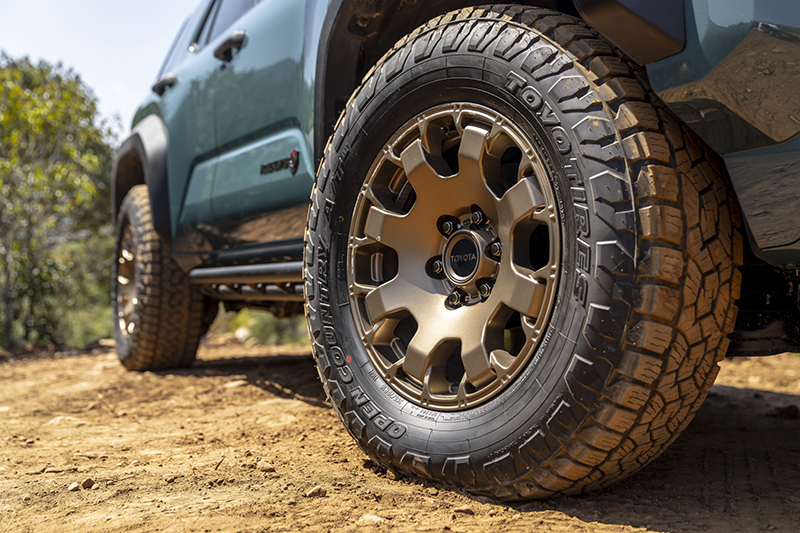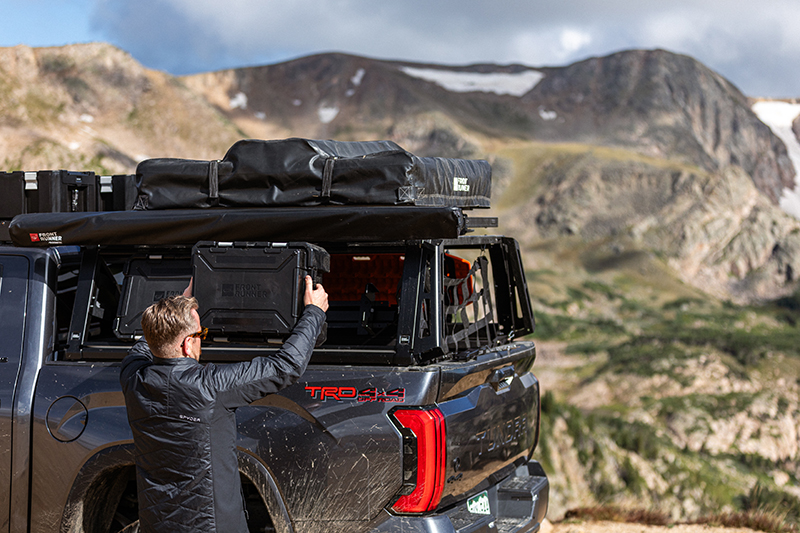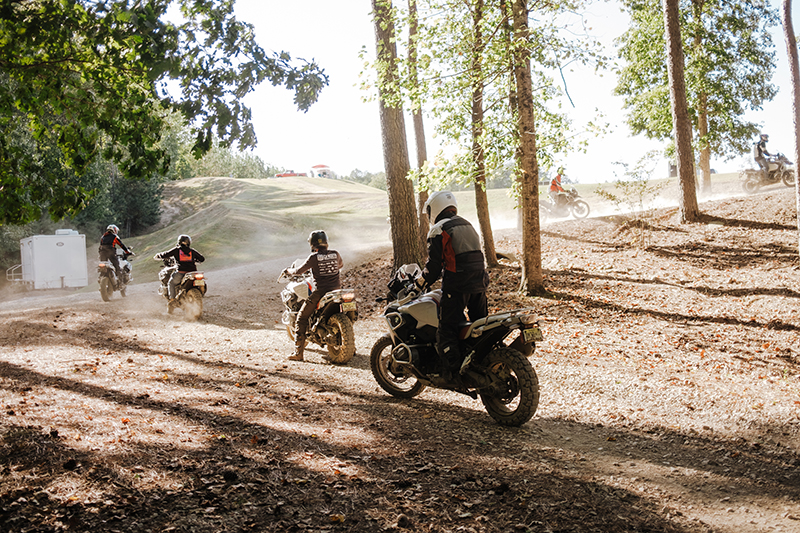Honda Pilot
As my airliner cleared the cloud cover over the front range of the Rockies, I wondered what I would find to say to a readership immersed in off-roading about two Honda SUVs.
I was traveling to Los Angeles for a media launch of Honda’s “refreshed” 2019 Pilot and HR-V. According to Honda, their last public relations splash for the Pilot had focused on the addition of their Sensing® suite of safety features but had underemphasized the vehicle’s off-road capabilities. Now they intended to showcase those capabilities on an off-road course in the Santa Monica mountains, along with new, “more rugged exterior styling” intended to enhance the vehicle’s “adventure look.”
Let’s just say I was skeptical. In my mind, off-roading usually involves something with a locking differential and a winch, some beefy all-terrain tires and at least a few inches of lift. I was prepared to be unimpressed.
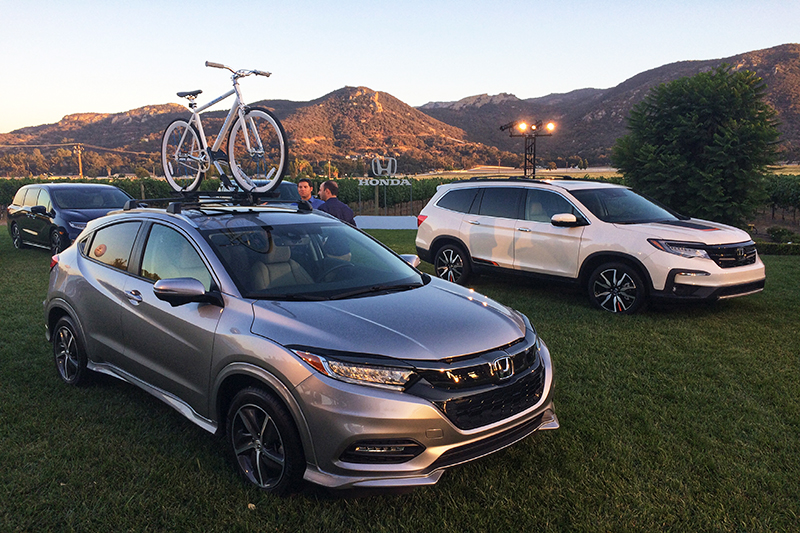
But as it turns out, there is quite a lot about the Pilot to impress. (The HR-V was not available for evaluation because its production had been suspended at Honda’s Celaya factory in Mexico as a result of flooding.) It may even be that the folks at Honda aren’t emphasizing the Pilot’s overlanding potential enough. Imagine that.
The Pilot and HR-V fall into Honda’s light truck category, the Pilot being a popular three-row, eight-seat SUV which has sold out the last couple of years because of high demand and limited production capacity. Since it was launched in the 2003 model year, Honda has marketed the Pilot around the concept of “family adventure.” And, indeed it has all the amenities on the “family” side of that equation: Its Sensing® suite of camera- and radar-based safety features includes the Collision Mitigation Braking System™ with Forward Collision Warning, Road Departure Mitigation; and a Lane Keeping Assist System. To keep the kids entertained, there’s a new, larger Rear Entertainment System to go along with Honda’s robust connectivity features, including Apple CarPlay,™ Android Auto.™ And, so you don’t have to yell at the kids to get their attention while they’re watching movies way back there in the third row, the Pilot offers CabinTalk,™ allowing those in the front row to easily communicate with those in the back using the rear speakers, wireless headphones, or both. Plus, the navigation system, developed in partnership with Garmin, is embedded in a seven-inch Thin Film Transistor (TFT) display, making the image bright and the map easy to follow.
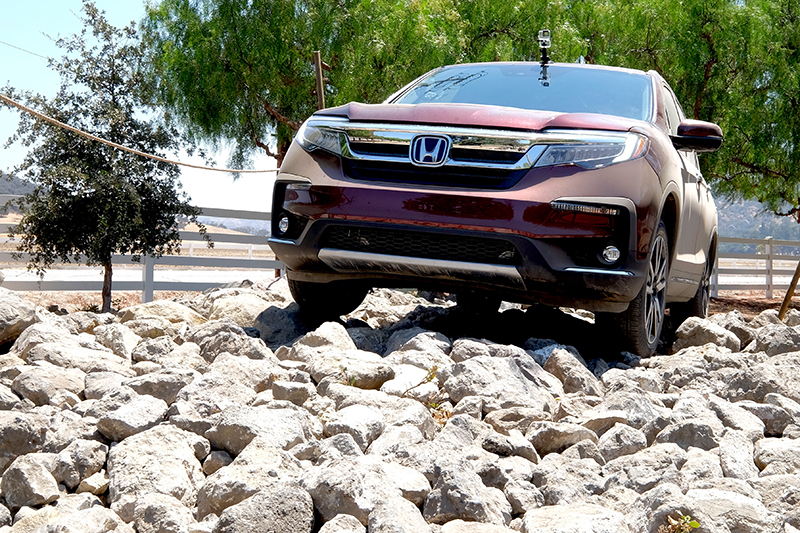
Yeah, yeah, but how does it do off road? By the time I’d heard Honda’s spiel and driven the vehicle on the pavement, I was eager to try it out in the dirt. They had created a small off-road course at the Epona Estate, a 40-acre ranch, vineyard and event center in exclusive Hidden Valley, a popular filming location for motion pictures, television and, especially, car commercials. I arrived there in the Pilot via some twisty mountain roads and, in the process, inadvertently tested the lane departure alert system a few times (it definitely gets your attention) and noticed something I did NOT notice: the Idle Stop system. I’ve had only limited experience with these systems which, when the vehicle is not in motion, automatically shut down and restart the engine to reduce the amount of time it spends idling, thus reducing fuel consumption and emissions. My previous experience was, well, annoying. Honda’s upgrades—integrating the Idle Stop with a new second-gear launch mode, new programming and a new brake pressure trigger—result in quicker restarts and make the whole process hardly noticeable. And not annoying.
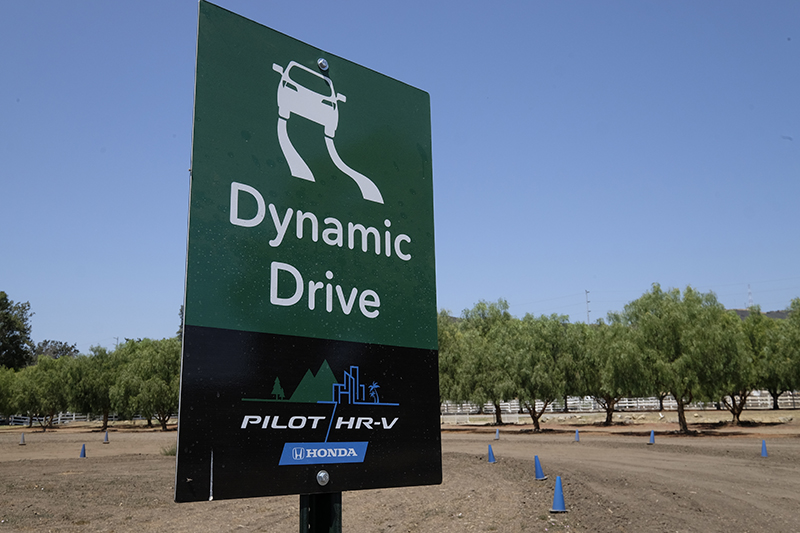
The off-road course was mild, but fairly represented many conditions you’d encounter on forest roads driving to a trailhead or campground (as long as those conditions are dry — this was southern California in August after all) and allowed Honda to show off its intelligent Variable Torque Management All-Wheel Drive system (i-VTM4), which has been available for a couple of years on both the Pilot and the Ridgeline pick-up. It boasts “true torque-vectoring” (as opposed to competitors’ brake-based torque vectoring), which depends on an “electronically controlled, hydraulically actuated rear differential which apportions engine torque between the front and rear axles, and dynamically distributes torque between the left and right rear wheels.” Now, there’s a mouthful! Four traction modes — Normal, Snow, Sand, and Mud — modify such things as torque distribution and transmission shifting for optimal performance in various conditions.
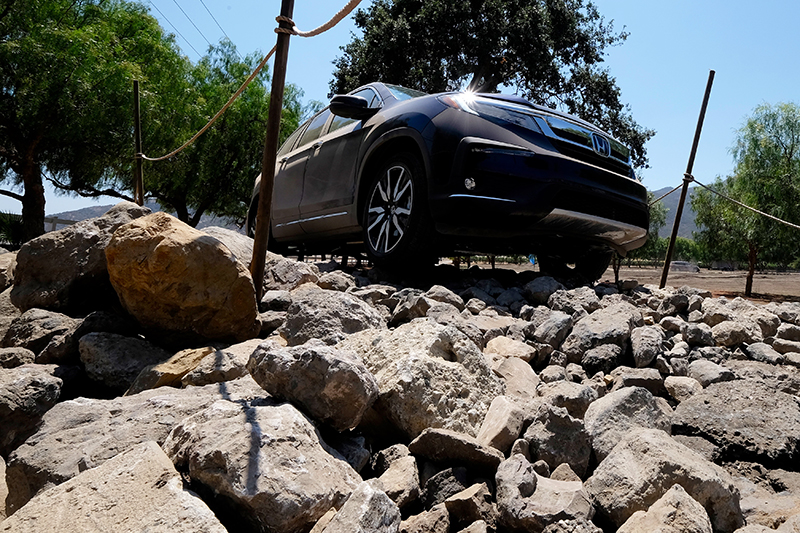
I drove the off-road course with a Honda product expert named Clete, starting with the “Frame Twister” feature, a berm we crossed to demonstrate the rigidity of the frame; then negotiating a side hill of about 33 degrees which Clete said would have prompted roll-over in a 1990s Ford Explorer and traversing a sand pit where I got to try out the Sand mode. The best parts were the “Articulating Mounds,” deep ruts where we got a wheel several feet off the ground; the “Traction Control Rock Pile,” which looked quite daunting but was easily conquered; and a steep hill which highlighted a feature whereby the vehicle will hold itself in place for three seconds after your foot is removed from both the accelerator and the brake.
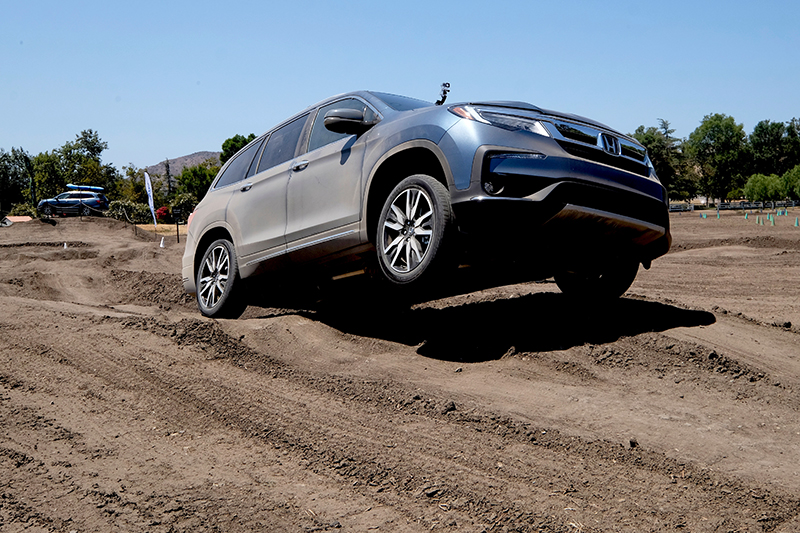
Obviously this was an extremely limited evaluation but provided an impressive glimpse into the Pilot’s capability. Honda admits it’s no rock-crawler, but I suspect it will get you and the family the majority of places you want to go for outdoor recreation. With all three seats in the vehicle, cargo space is limited at 17 cubic feet, but a roof rack could help with that.
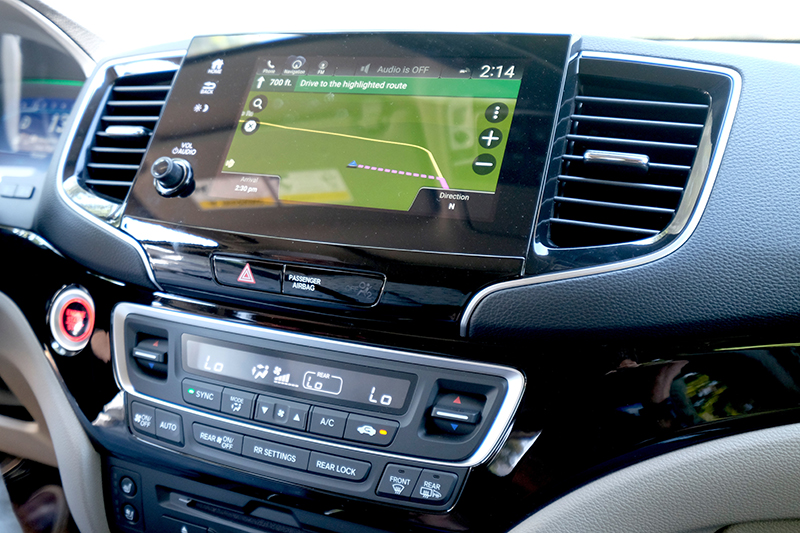
Speaking of accessories, I met with mostly blank stares from Honda reps when I asked about the possibilities of enhancing the Pilot’s overlanding prowess with aftermarket products. Perhaps there will be more buzz on the topic after the 2018 Rebelle Rally. Honda has entered two teams—one driving a Pilot and the other a Ridgeline— in the women’s 1,500-mile, eight-day off-road navigation event, which starts October 11 and covers rugged desert and mountain terrain between Lake Tahoe, California and San Diego. According to Honda, the vehicles driven by Honda’s Rebelle Rally teams will be only lightly modified, with more aggressive off-road tires, skid plates, auxiliary lights, increased ground clearance on the Pilot and other changes required for carrying off-road equipment. Now that I’ve had a bit of experience with the Pilot, I’m intrigued to watch how it does in this challenging event, which is explained in more detail at http://www.rebellerally.com.
Honda Pilot MSRP: $42,655 for the most popular trim level, EX-L.
https://automobiles.honda.com/pilot/
* OutdoorX4 Magazine – Promoting responsible 4×4 adventure travel and outdoor recreation


